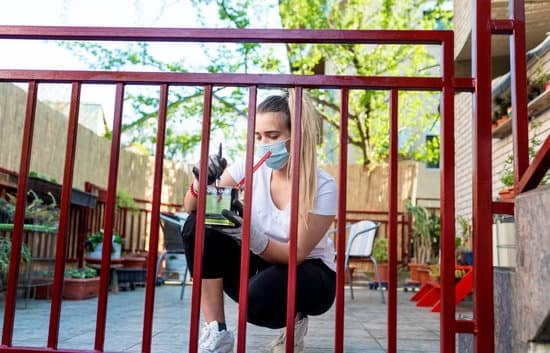You may be wondering, “Does homeowners insurance cover home improvements?” Homeowners insurance is designed to protect your home and belongings from unforeseen events, but what about when you make changes or improvements to your home? In this article, we will explore the ins and outs of homeowners insurance in relation to home improvements.
Before we dive into the specifics of coverage for home improvements, it’s essential to understand the purpose of homeowners insurance and how it works. Homeowners insurance provides financial protection against damage to your home and personal property, as well as liability for any injuries or property damage caused by you or your family members. It is a vital safety net that can help you recover financially from unexpected events such as natural disasters, theft, or accidents.
As a homeowner, there may come a time when you want to make upgrades or renovations to your property. Whether it’s a kitchen remodel, adding a new bathroom, or landscaping improvements, these changes are considered home improvements. The big question remains – will your homeowners insurance cover these enhancements? Let’s delve into the intricacies of coverage for home improvements and how it intersects with your homeowners insurance policy.
Understanding Home Improvements
When it comes to home improvements, it’s important to have a clear understanding of what falls into this category. Home improvements generally refer to any renovations, upgrades, or additions made to a property with the purpose of enhancing its functionality, aesthetic appeal, or value. This can include major projects such as kitchen remodels, bathroom renovations, room additions, as well as minor enhancements like installing new flooring or updating light fixtures.
There are different types of home improvements that homeowners may consider depending on their specific needs and goals. Cosmetic improvements focus on enhancing the visual appeal of a space, such as painting walls, upgrading countertops, or adding landscaping elements.
Functional improvements aim to improve the usability and efficiency of a home, such as replacing old plumbing systems, updating electrical wiring, or installing energy-efficient windows. Structural improvements involve making changes to the layout or framework of a property, such as adding an extension, building a porch or deck, or reinforcing the foundation for added stability.
It’s important for homeowners to differentiate between regular maintenance tasks and actual home improvements in order to understand how they may impact their insurance coverage. While routine maintenance like fixing leaks or repainting walls may not fall under home improvements in the eyes of insurance providers, anything that significantly alters the structure or value of your home would typically be classified as such.
| Types | Description |
|---|---|
| Cosmetic Improvements | Enhancing visual appeal (painting walls, upgrading countertops) |
| Functional Improvements | Improving usability and efficiency (replacing plumbing systems) |
| Structural Improvements | Making changes to layout or framework (building an extension) |
Coverage for Home Improvements
Homeowners insurance is essential for protecting your home and personal belongings in the event of unexpected damage or loss. However, when it comes to making home improvements, many homeowners wonder whether their insurance will cover the cost. Home improvements can range from small upgrades like installing a new kitchen faucet to major renovations such as adding a new room or remodeling the entire house.
Understanding Typical Coverage
In general, most standard homeowners insurance policies do not cover the cost of home improvements. These policies are designed to protect against sudden and accidental damage, such as fire, storms, theft, and certain types of water damage. When it comes to planned home improvements, coverage for these would typically fall under a separate policy or endorsement.
Add-on Policies and Endorsements
To ensure that your home improvements are covered by insurance, you may need to consider adding additional coverage or endorsements to your existing policy. For example, if you plan on renovating your kitchen or bathroom, you might need to purchase a special endorsement to cover the increased value of these areas after the improvements are made. It’s important to discuss your specific plans with your insurance agent to determine what additional coverage you may need.
Before starting any major home improvement project, it’s crucial to review your existing homeowners insurance policy and discuss your plans with your insurance provider. By understanding the limitations of your current coverage and exploring options for additional protection, you can avoid potential financial risks associated with home improvements that may not be covered by your policy.
Exceptions and Limitations
Unpermitted Work
One specific scenario where home improvements may not be covered by homeowners insurance is when the work was done without obtaining the necessary permits. Many insurance policies require that any major renovations or additions to a home be properly permitted. If the work is not permitted and something goes wrong, such as a fire or structural damage, the insurance company may deny coverage for those specific improvements.
Neglect and Deferred Maintenance
Another limitation to coverage for home improvements is neglect and deferred maintenance. If a homeowner fails to properly maintain their newly renovated areas, such as neglecting to fix leaks in a newly remodeled bathroom, resulting damage may not be covered by insurance. Additionally, if an improvement causes damage due to faulty installation or lack of maintenance, it may not be covered under the policy.
Commercial Use
Homeowners insurance typically does not cover home improvements made for commercial use. For example, if a homeowner remodels their basement into a photography studio and uses it as a business space, any damages or liability issues related to that commercial use may not be covered by their standard homeowners insurance policy.
It’s important for homeowners to thoroughly review their insurance policy and understand any exclusions related to home improvements. If there are uncertainties about coverage for specific renovations or additions, it’s advisable to communicate directly with the insurance provider for clarification before starting any major home improvement projects.
Adding Value to Your Home
When considering home improvements, it is important to understand that certain upgrades can increase the value of your home and may consequently affect your homeowners insurance coverage. For example, additions such as a new roof, updated electrical systems, or modernized plumbing can enhance the overall value of your property. These improvements can also impact your insurance premiums and coverage limits.
It’s important to note that increased property value may result in a higher replacement cost for your home, which in turn could lead to an adjustment in your homeowners insurance policy. Therefore, it is crucial to notify your insurance provider of any major home improvements so that they can reassess your coverage needs accordingly.
In addition to affecting the replacement cost of your home and its contents, certain home improvements can mitigate risk factors that might have previously affected your insurance rates. For instance, the installation of security systems or fire-resistant materials could make your home less susceptible to damage from theft or fire, potentially resulting in lower insurance premiums.
However, it’s essential to verify with your insurer how these specific enhancements might impact your policy and whether any discounts or incentives are available for implementing these safety features.
| Home Improvement | Impact on Insurance Coverage |
|---|---|
| New Roof | Potentially increases property value and may raise replacement cost; could qualify for lower premiums if impact-resilient materials are used. |
| Security Systems | Mitigates burglary risk and lowers potential claims; likely results in discounted premiums. |
| Modernized Plumbing | Increases property value; may raise replacement cost but reduces the risk of water damage claims. |
DIY vs Professional Work
When it comes to making home improvements, whether you choose to take on the task yourself or hire a professional contractor can have an impact on your homeowners insurance coverage. Here are some key points to consider when contrasting the coverage for home improvements done by homeowners themselves versus professional contractors:
- Quality of Work: Insurance companies may consider the quality of workmanship when determining coverage for home improvements. If a DIY project leads to damage or malfunction, your insurance provider may be less likely to cover it compared to work done by a licensed professional.
- Building Codes and Regulations: When hiring a professional contractor, they are responsible for ensuring that all work meets local building codes and regulations. If you do the work yourself and it does not meet these requirements, any resulting issues may not be covered by your homeowners insurance.
- Liability Coverage: Professional contractors often carry their own liability insurance, which can potentially cover any damages or injuries related to the home improvement project. If you do the work yourself and someone is injured or property is damaged as a result, your homeowners insurance may need to come into play.
Ultimately, the decision between DIY and hiring a professional for home improvements can have implications for your homeowners insurance coverage. It’s important to carefully consider the potential risks and benefits of each option before embarking on any significant projects. Additionally, discussing your plans with your insurance provider can help you understand how different scenarios may impact your coverage and what steps you can take to ensure adequate protection.
Steps to Take
When considering home improvements, it’s important to ensure that your homeowners insurance adequately covers the changes you are making. Here are some practical tips on how to ensure your home improvements are properly covered by insurance:
- Review Your Policy: Take the time to carefully review your existing homeowners insurance policy. Understand what is currently covered and whether there are any limitations or exclusions related to home improvements.
- Inform Your Insurance Company: Keep your insurance company informed about any planned home improvements. Depending on the scope of the project, you may need to update your policy or add additional coverage to protect the new investments in your home.
- Get Proper Documentation: Make sure to keep records of all receipts, contracts, and permits related to the home improvements. Having proper documentation can help support any future claims related to the added value of these improvements.
Taking these steps can help ensure that your homeowners insurance adequately covers any home improvements, giving you peace of mind as you enhance and add value to your property. Remember that every insurance policy and situation is unique, so it’s always best to consult with your insurance provider for personalized advice and guidance.
Conclusion
In conclusion, homeowners insurance can provide coverage for certain home improvements, but it is important for homeowners to understand the limitations and exceptions that may apply. It is essential to review your policy and consult with your insurance provider before starting any major home improvement project. By doing so, you can ensure that you have the necessary coverage in place to protect your investment in your home.
When considering home improvements, especially those that can increase the value of your property, it is important to update your insurance policy accordingly. This will help avoid any gaps in coverage and ensure that your home and its improvements are adequately protected. Additionally, seeking out professional contractors for major projects can also impact your insurance coverage, so it is crucial to consider these factors when making decisions about your home.
Ultimately, the key takeaway is that homeowners should be proactive and well-informed when it comes to their insurance coverage for home improvements. By understanding what is covered, any exceptions or limitations, and taking the necessary steps to update their policy as needed, homeowners can enjoy peace of mind knowing that their investment in their home is adequately protected.
Frequently Asked Questions
What Are Four Things Not Covered by Homeowners Insurance?
Four things not covered by homeowners insurance are: flood damage, earthquake damage, maintenance-related issues (such as mold or pest infestations), and certain types of personal property like expensive jewelry or fine art.
Which of the Following Are Not Covered by Homeowners Insurance?
Pets, motor vehicles, aircraft, and intentional acts of destruction or damage are typically not covered by homeowners insurance. These items and actions require their own specific insurance coverage.
What Are the Six Categories Typically Covered by Homeowners Insurance?
The six categories typically covered by homeowners insurance include dwelling coverage (for the physical structure of the home), other structures coverage (for detached garages, sheds, etc.
), personal property coverage (for belongings inside the home), loss of use coverage (for additional living expenses if the home is uninhabitable), personal liability coverage (to protect against lawsuits for bodily injury or property damage), and medical payments coverage (for medical expenses for guests injured on the property).

I’m thrilled to have you here as a part of the Remodeling Top community. This is where my journey as an architect and remodeling enthusiast intersects with your passion for transforming houses into dream homes.





